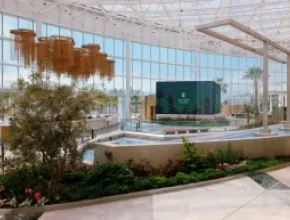Few destinations have shaped the course of history more than Spain’s eight-province Andalucía region. Spanning southernmost Europe between the Atlantic Ocean and Mediterranean Sea, these resource-rich lands, facing Africa across the Strait of Gibraltar, were the axis of influential civilizations through the ages.
From prehistoric times onward, conquerors came in waves. The Phoenicians settled coastal Cadiz, Europe’s oldest city, in 1,100 BC, followed by the Celts, Greeks, Carthaginians and others. The Romans paved the peninsula with roads as one of their richest outposts before rampaging Visigoths and Vandals took over. In 711, Muslims made “al-Andalus” their home for eight centuries before the Catholic Monarchs Isabella I of Castille and Ferdinand II of Aragon, Spain’s first queen and king, ended Islamic rule in the Reconquista of 1492.
That same year, Christopher Columbus sailed from the Andalucían port of Palos de la Frontera on his infamous New World quest, followed in 1519 by Ferdinand Magellan’s fateful departure from Sevilla in search of the Spice Islands. Forever changing the world, these Age of Discovery expeditions form part of Andalucía’s complex legacy.
As my recent press trip to Sevilla and Granada with Meliá Hotels International revealed, the present is one of lightness, ease and indelible impressions, including a singular history of meetings and events.
[Related: On the Scene in Patagonia: Exceptional Group Encounters With Lindblad Expeditions]
Scenes from Sevilla
Launched in 1956 on the Spanish island of Mallorca by 21-year-old tour operator Gabriel Escarrer Juliá, Meliá is Spain’s largest hotel company, with a nine-brand portfolio of more than 400 properties and counting in 40-plus countries.
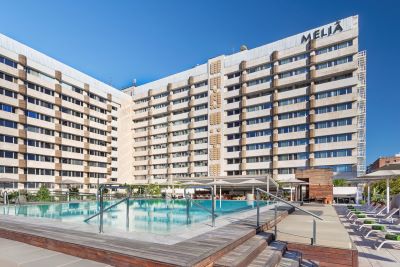
Our adventure began at Meliá Sevilla, the ancient city’s largest convention hotel with 365 keys and 26 flexible spaces for 2,500 attendees. Covered terraces surrounding the sizeable outdoor pool are great for fresh air events. Book The Level, Meliá’s VIP category, for benefits including a private check-in, exclusive lounge for breakfast and snacks and meeting room on request. Our welcome lunch at street-facing Quimera Restaurant was top-class, featuring innovative dishes and fresh ingredients.
Minutes from the hotel, Plaza de España, built for the Ibero-American Exposition of 1929, is the most cinematic of Spain’s public squares. Setting for movies including Star Wars: Attack of the Clones, this architectural dream of towers, curving arcades, bridges and canals, set within sprawling María Luisa Park, hosts concerts, festivals and other events.
Other group venues include the FIBES Conference and Exhibition Centre, which hosted the 24th Annual Latin Grammy Awards in November 2023 in the first-ever ceremony held outside of the United States. Charterhouse Island, site of Seville Expo '92, which commemorated the 500th anniversary of Columbus reaching the Americas, is now a tech and research park.
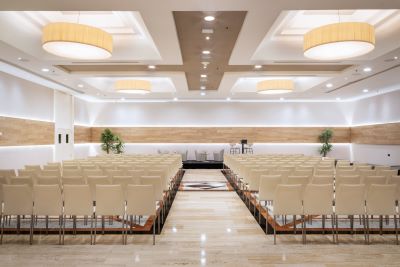
Our three-hour guided walking tour of Sevilla’s nearby historic center with local events and teambuilding company Es.cultura revealed more landmarks from across the ages. Settled in the 8th century BC by the Tartessians, an early Iberian tribe, the port city became Hispalis, an official colony of the Roman Empire founded by Julius Caesar in 49 BC. Portions of the ancient Roman road which connected the region are still visible.
The Torre del Oro (Golden Tower), from 1220, is a remnant of the Moorish walls once enclosing the city. Female cigarreras working at the former Royal Tobacco Factory, now a University of Sevilla building, inspired the title character of the legendary opera Carmen. The Plaza de Toros de Sevilla bullfighting arena is a national icon.
Across the Guadalquivir River, Triana is among Europe’s most soulful and enigmatic neighborhoods. Accessed via the famed Puente de Isabel II iron bridge, this fiercely proud barrio buzzes with bars and cafes while pulsating with an undercurrent of vibes from its historic gypsy days. One of Spain’s crucibles of flamenco, the emotion-filled dance of the oppressed arising from their toil in local forges, Triana was also a center of the Spanish Inquisition.
Ceramic-making in the district dates to the Islamic period. After lunching on tapas in a subterranean brick oven, one of the alluring spaces at Casa Montalván, a historic ceramics factory transformed into a multi-level restaurant and event space, we took a ceramics workshop at group-capable Barro Azul. Other stops included the historic Triana Market and riverside dining at avant-garde Abades Triana.
Back in Old Town Sevilla, we strolled the outer walls of the 14th-century Real Alcázar of Sevilla. One of Europe’s oldest active royal palaces, the UNESCO World Heritage Site’s screen appearances include Lawrence of Arabia and Game of Thrones. The adjacent former Jewish quarter of Barrio de Santa Cruz is a beguiling maze of narrow streets populated with plazas, gardens and Sevilla’s ubiquitous orange trees. Winding through the labyrinth at night, we arrived at the UNESCO-designated 16th-century Sevilla Cathedral, the world’s largest Gothic church, before our farewell dinner.
[Related: History and Hospitality Make Vienna, Austria, an Ageless Meetings Destination]
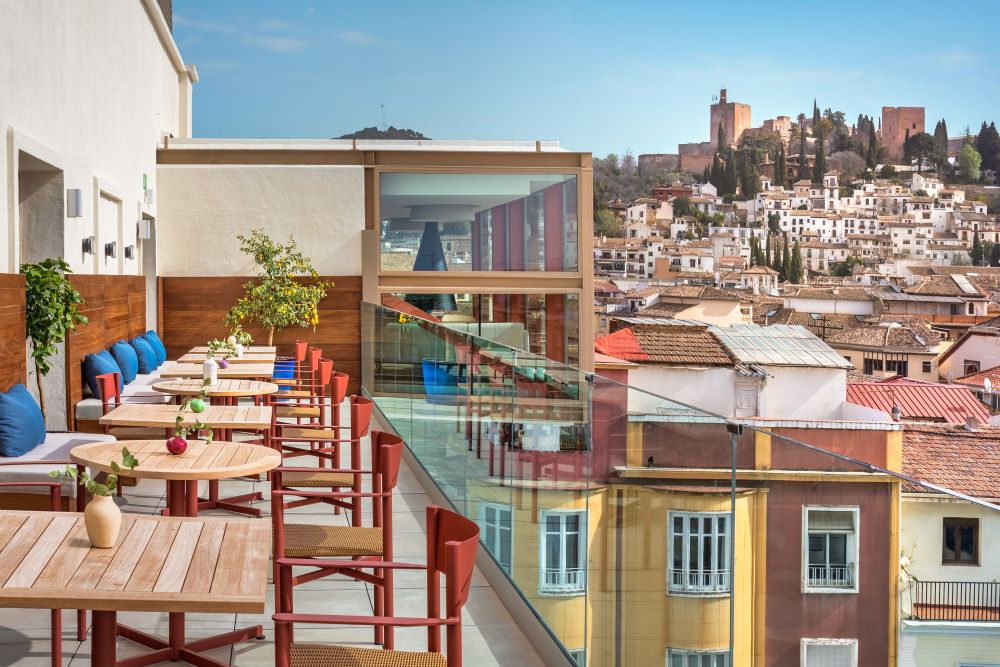
The Grandeur of Granada
Seeing Spain by train is a dream date. Following France’s lead, riding the rails is now mandated for some domestic flight routes that have a rail alternative under 2.5 hours to save on emissions. Such was the duration of our train ride to our next appointment with Andalucía’s richly layered history within the folds of ancient Granada.
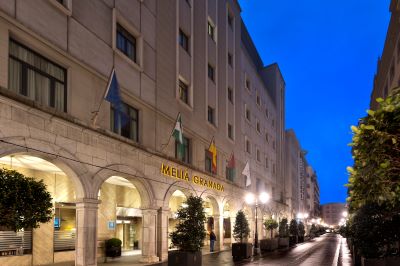
Rolling hills, endless olive groves, hilltop castles and other sights along the way set the stage for arrival at Meliá Granada in the historic heart of the city. Reopened in March 2024 following a year-long renovation, the 181-room retreat’s charms include the Level Lounge. Featuring an outdoor terrace, this glassed-in top-floor perch offers a panoramic window on the Cathedral of Granada, where Queen Isabella and King Ferdinand are entombed in the adjacent Royal Chapel of Granada; iconic UNESCO-listed Alhambra palace-fortress and distant Sierra Nevada mountains, home of Europe’s southernmost ski resort.
The upgrade included two high-tech meeting rooms, where a tech group was in session while we lunched on paella at seafood-driven Ola Restaurant. The hotel also offers Italian-inspired Pecorino and the Marimoto sushi bar.
Granada is another cradle of flamenco. Signature performance stages include the traditional cave homes of Granada’s gypsy quarter, Sacromonte. Pocketed in the hills above the city, this centuries-old community is home of Venta del Gallo, where we saw the burning passion of flamenco up close.
The magic continued at Carmen de las Tomasas restaurant in the Albaicín, Granada’s oldest Moorish quarter, with a sunset dinner on an outdoor terrace overlooking the mighty Alhambra.
Led by a guide from Lolita’s Tours, our three-hour walk through the hilltop UNESCO World Heritage Site was transcendent.
Built by Mohammed I of the Nasrid dynasty (1238-1492), the complex was the last stronghold of the Moorish kingdom in Spain. From the towers of the Alcazaba fortress to the splendid Islamic architecture of the Nasrid Palaces to the verdant Generalife Gardens, the Alhambra is a wonderland throughout. Signature venues include Palacios Nazaries, where Washington Irving penned “Tales of the Alhambra”; the open-air Courtyard of the Myrtles; and Salón de los Embajadores (Hall of the Ambassadors), where the Catholic Monarchs green-lighted Christopher Columbus’s New World expedition.
Lunch was on one of the three garden terraces at Jardines de Alberto restaurant across from the Alhambra, followed by a traditional Arab bath, complete with immersion in hot and cold waters, at the subterranean Hammam Experience. Late dining is a Spanish standard; our farewell dinner, outside on a cobblestone street at Taberna La Tana, provided a festive end to our four-day Andalucían adventure, a feast for the senses in every way.






